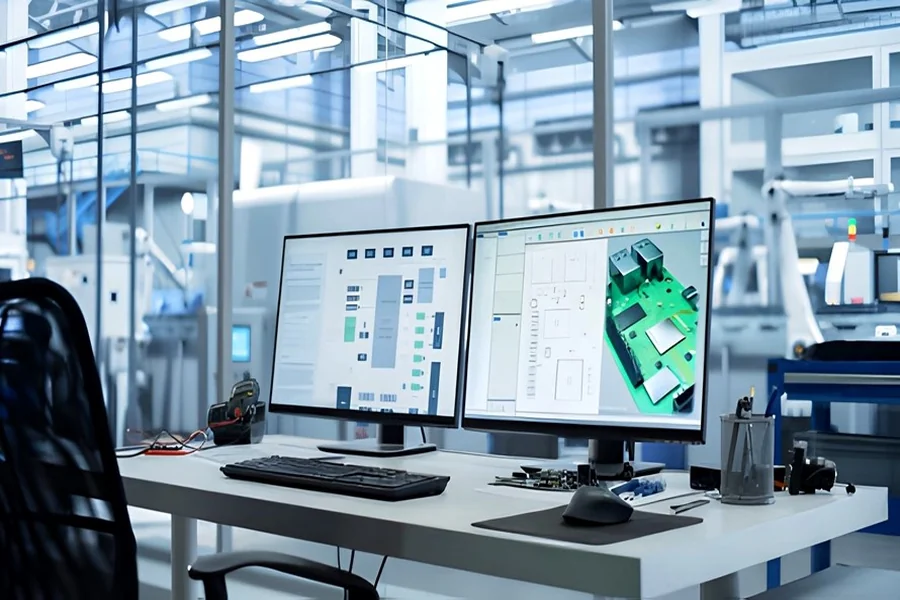Low volume PCB assembly refers to the production and assembly of printed circuit boards in small quantities, typically ranging from a few units to a few hundred. This approach is ideal for prototypes, product testing, or customized electronics that don’t require large-scale manufacturing. It allows designers and engineers to validate designs, identify performance issues, and make necessary adjustments before committing to mass production.
In today’s rapidly evolving electronics industry, where innovation and time-to-market are critical, low volume PCB assembly offers manufacturers the agility to bring new products to life quickly and efficiently. It bridges the gap between prototyping and full-scale production while maintaining professional assembly quality and precision.
The Process of Low Volume PCB Assembly
The process of low volume PCB assembly is similar to standard high-volume manufacturing but optimized for smaller batches with greater attention to detail and flexibility.
Design Review and Material Preparation
The first step is a comprehensive review of the PCB design files to ensure manufacturability and identify potential issues. Components and materials are then sourced according to the bill of materials (BOM). Since smaller quantities are involved, suppliers often select readily available components to minimize lead time.
Solder Paste Application and Component Placement
Solder paste is applied to the pads on the PCB using stencils. Automated pick-and-place machines then accurately position surface-mount components based on the design layout. For low volume production, manual placement may also be used for specialty components or prototypes.
Reflow and Wave Soldering
After placement, the boards pass through a reflow oven, where solder paste melts and solidifies to form strong electrical connections. For through-hole components, wave soldering or selective soldering techniques are used to ensure durability and reliability.
Inspection and Testing
Quality assurance is a critical part of low volume PCB assembly. Each assembled board undergoes inspection processes such as Automated Optical Inspection (AOI), X-ray inspection for BGAs, and functional testing to ensure all circuits perform as intended.
Final Assembly and Packaging
Once testing is complete, the boards are cleaned, labeled, and packaged for delivery. Manufacturers offering low volume PCB assembly often provide additional services such as conformal coating, cable assembly, or mechanical integration to deliver fully functional products.
Benefits of Low Volume PCB Assembly
Low volume PCB assembly offers several advantages for businesses and engineers who prioritize flexibility, cost control, and quality.
One of the primary benefits is faster turnaround time. Since fewer boards are produced, assembly schedules are shorter, allowing for rapid prototyping and market testing. This quick feedback loop helps engineers refine their designs efficiently before entering mass production.
Another key advantage is cost-effectiveness for small batches. Instead of investing heavily in large production runs, companies can produce only what they need, minimizing inventory risks and waste. Low volume assembly also allows design customization — each batch can be tailored with specific features or component variations.
Moreover, smaller runs enable stringent quality control. Each board can be tested individually, ensuring that the performance meets the required standards. This level of detail is particularly valuable in industries like aerospace, medical devices, and telecommunications, where product reliability is critical.
Applications of Low Volume PCB Assembly
Low volume PCB assembly is widely used across multiple industries that require short-run or customized electronics. Startups developing innovative technologies often rely on small-batch production for prototypes or pilot products.
In the medical industry, low volume assemblies are used in specialized diagnostic equipment or wearable health devices that require high precision. The automotive sector utilizes low batch production for sensors, control units, and electronic systems under development. Similarly, in aerospace and defense, low volume PCB assembly supports mission-critical applications that demand extensive testing before mass deployment.
Why Choose Low Volume PCB Assembly
Choosing low volume PCB assembly provides the flexibility to adapt to market demands without large financial commitments. It allows manufacturers to scale up or modify production quickly based on customer feedback or technological updates. Additionally, with advancements in automation and surface-mount technology, small batch runs can now achieve the same level of accuracy and performance as high-volume manufacturing.
Partnering with an experienced assembly house ensures that even low quantity orders receive the same engineering support, testing, and attention to quality as larger projects. This professional approach reduces production errors, improves product reliability, and accelerates time-to-market.
Final Thoughts: Partner with Reliable PCBA China Experts
When it comes to efficient, precise, and affordable small-batch production, working with a trusted PCBA China provider offers a clear advantage. China is home to world-class facilities equipped with cutting-edge automation, experienced engineers, and streamlined supply chains optimized for both prototyping and low volume PCB assembly. By partnering with a reliable Chinese PCBA manufacturer, businesses can achieve exceptional quality, faster delivery, and competitive pricing — ensuring that every low volume project transitions smoothly from concept to reality.

